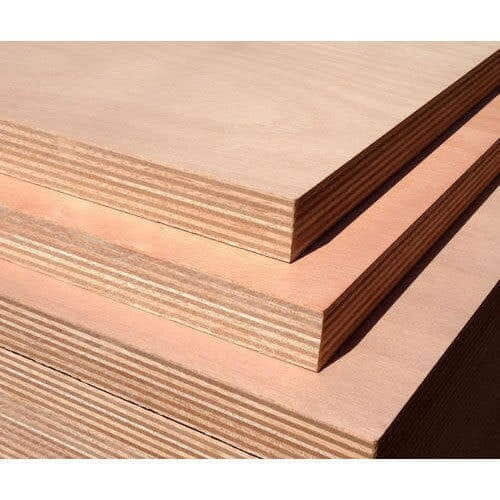Introduction
Plywood is a versatile and essential material used in a wide range of applications, from furniture and cabinetry to flooring and wall panels. Understanding how to identify high-quality plywood is crucial to ensuring durability, stability, and aesthetic appeal in your projects. In this comprehensive guide, we’ll explore the key factors to consider when evaluating plywood quality and offer practical tips for making the right choice.

Understanding Plywood Basics
Before diving into quality indicators, it’s essential to understand what plywood is and how it’s made. Plywood is composed of multiple layers (or "plies") of wood veneer glued together, with the grain of each layer oriented perpendicular to the one below it. This construction gives plywood its strength and stability.
Key Components:
- Veneers: Thin slices of wood used to form each layer.
- Core: The inner layers that provide the bulk of the strength.
- Adhesive: The glue used to bond the veneers together.
1. Examine the Plywood Grade
Plywood is classified into different grades based on the quality of the veneers and the number of defects. The grading system helps you understand the expected appearance and performance of the plywood.
Grades of Plywood:
- Grade A: Smooth and blemish-free surface; ideal for applications where appearance is critical.
- Grade B: Minor imperfections; suitable for projects where appearance matters but is less critical.
- Grade C: More noticeable defects; generally used for hidden applications or where cost is a factor.
- Grade D: Significant defects; often used for structural applications where appearance is less important.
Tip: Always choose the grade that matches your project's requirements for appearance and functionality.
2. Check the Core Quality
The core of the plywood affects its strength, stability, and durability. High-quality plywood will have a consistent core with no voids or gaps.
Core Types:
- Multi-Layered Core: Offers greater strength and stability with more plies in the core.
- Particleboard Core: Often used in lower-grade plywood; can be less durable.
- Veneer Core: Provides a high-quality finish and strength but can be more expensive.
Tip: Look for plywood with a solid, uniform core and avoid sheets with visible voids or gaps.
3. Assess the Veneer Quality
The quality of the outer veneers impacts both the appearance and durability of the plywood. High-quality plywood will have clean, smooth veneers with minimal knots and defects.
Features to Look For:
- Consistency: Even color and grain patterns across the surface.
- Finish: Smooth, sanded surface with no rough spots or imperfections.
- Knots and Defects: Minimal or no knots; defects should be small and infrequent.
Tip: Inspect the plywood surface closely, and choose sheets with minimal visible defects.
4. Evaluate Adhesive Quality
The adhesive used in plywood construction affects its durability and resistance to moisture. High-quality plywood will use adhesives that are resistant to moisture and provide strong bonding between layers.
Types of Adhesives:
- Phenolic Resin: Provides strong bonding and moisture resistance; often used in high-quality plywood.
- Urea-Formaldehyde: Common in lower-grade plywood; less resistant to moisture.
Tip: Verify that the plywood uses high-grade adhesives, especially if it will be exposed to moisture or extreme conditions.
5. Check for Certifications
Certifications can provide assurance of plywood quality and compliance with industry standards. Look for certifications from recognized organizations that indicate adherence to specific quality and environmental standards.
Common Certifications:
- ISI Certification: Ensures compliance with Indian standards for plywood.
- FSC Certification: Indicates that the plywood comes from sustainably managed forests.
Tip: Choose plywood with relevant certifications to ensure quality and environmental responsibility.
6. Inspect for Uniform Thickness
Consistency in thickness is crucial for ensuring proper fitting and stability in your projects. High-quality plywood will have a uniform thickness across the entire sheet.
What to Look For:
- Thickness Tolerance: Plywood should adhere to the specified thickness with minimal variation.
- Flatness: The sheet should be flat and free from warping or bending.
Tip: Measure the thickness at various points on the sheet to ensure consistency.
7. Consider the Surface Finish
The finish of the plywood affects its suitability for various applications. High-quality plywood often has a smooth, well-sanded surface that is ready for staining or painting.
Surface Types:
- Sanded: Smooth and ready for finishing; ideal for visible applications.
- Unfinished: May require additional sanding and preparation.
Tip: Choose plywood with a finish that matches your project's needs, and be prepared for additional preparation if necessary.
8. Test for Strength and Flexibility
The strength and flexibility of plywood can impact its performance in different applications. High-quality plywood should be strong and flexible enough to handle typical loads and stresses.
How to Test:
- Bend Test: Gently apply pressure to see if the plywood bends or flexes excessively.
- Load Test: Check the plywood's ability to support weight without warping or breaking.
Tip: Opt for plywood that demonstrates good strength and flexibility characteristics suitable for your application.
Conclusion
Identifying high-quality plywood involves evaluating several key factors, including grade, core quality, veneer quality, adhesive type, certifications, thickness uniformity, surface finish, and strength. By paying attention to these details, you can ensure that you select plywood that meets your project’s needs and delivers lasting performance.
Whether you're working on furniture, cabinetry, or any other project, choosing the right plywood is essential for achieving the best results. Use this guide to make informed decisions and invest in plywood that combines quality, durability, and aesthetic appeal.
For more tips and guidance on plywood and other materials, stay tuned to our blog and explore additional resources to help you succeed in your projects.






